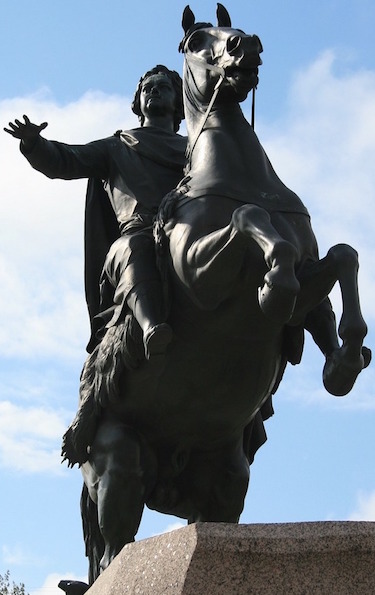What goes up can be dangerous. A horse that rears can easily fall, injuring himself and hurting or even killing his rider. If you own a horse that rears (or even thinks about rearing–more on that in a moment), here are four key things to know.
[READ: Keep Your Horse Moving Forward]

1. Rearing is really, really serious. Pro trainers will tell you that dealing with a rearer is often best left to an expert. “Once a horse has become confirmed in stopping and rearing, he already knows more about the subject than we ever meant for him to know,” says Frank Barnett, a Florida trainer with years of experience schooling problem horses. “He won’t just ‘unlearn it,’ though there are ways to ‘disarm’ him when that subject comes up.” Whether you’re the right person to attempt that disarming—or whether you should continue with the horse after a trainer has worked with him—are matters to discuss with an expert for your and your horse’s safety.
2. Rearing begins subtly. How subtle? “The first time a horse rears his front feet don’t leave the ground,” says Barnett. “It’s just a hesitation. You might be leaving the barn and he just stops. He may go again immediately, but he’s been able to stick a delay into the system.” He won’t forget it, either, and if you don’t nip that “nappy” tendency in the bud, he’ll build on it. You’ll need to stay constantly alert and aware to keep nappiness—that reluctance to go forward–from happening again.
3. You can inadvertently cause a rear. Rearing occurs as a result of fear, confusion, pain, or disobedience. It’s your horse’s way of saying NO when he doesn’t have any other way to get out of what he feels is a bad spot. You can actually cause a rear by overfacing your horse or mixing your signals—such as asking him to go forward while inadvertently hanging on his mouth. The latter is a mistake sometimes made out of nervousness or fear.
“When that happens, the horse feels claustrophobic and his energy bottles up,” explains Texas trainer and clinician Clinton Anderson. “The only way he can release the energy is by going up in the air or flying backwards.” Keeping your horse thinking forward—and feeling free of pain or fear in doing so—is an important preventive to rearing.
4. Rely on one rein, not two. If your horse surprises you with a rear, your immediate goal is to keep him balanced as you urge his front feet back onto the ground. Smoothly move your legs back and your hands and upper body straight forward, encouraging him to return to earth. Once he does, if you feel uncertain of your ability to keep him from going up again, Anderson advises you to get off and put him immediately to work on a longeing circle to remind him that you’re in charge of his feet. (Anderson’s “longeing for respect” is designed for this sort of work. Review how to do it here and here.)
If you do feel secure enough to stay mounted, put your horse to work right away—because he can’t rear while he’s moving forward. Do this using one rein, drawing him to one side and then the other.
“When a horse panics and turns to the reactive side of his brain, always control him with just one rein,” explains Anderson. “Get him thinking, instead, by asking for lots of changes of direction.”
Then, soon after, figure out whether your horse’s problem is something you can deal with by improving his basics and remaining alert–or is best left in the hands of a pro.
WANT MORE? OTHER USEFUL STUFF:
Excusing misbehavior (why you shouldn’t).






